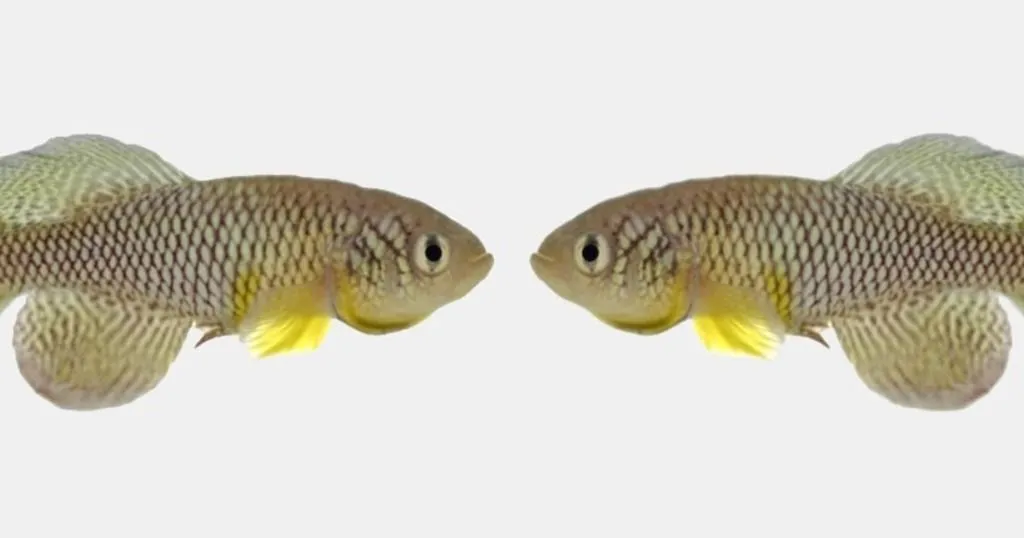How to measure complex exploratory behavior in larval zebrafish
Behavioral tests as the open field may overlook complex patterns of behavior. Today our guest bloggers explain about a new set-up for zebrafish larvae.
Posted by
Published on
Tue 22 Mar. 2016
Topics
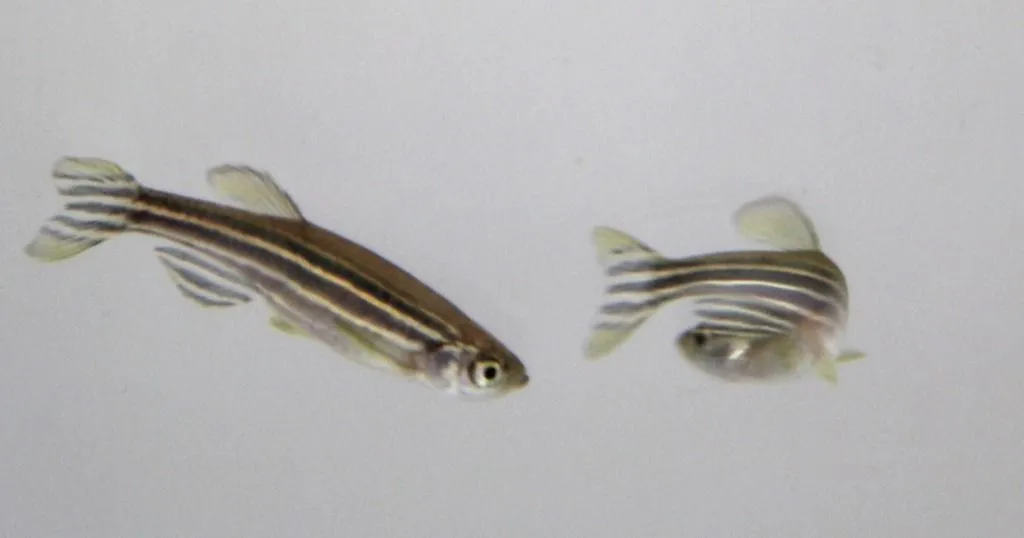
The Zebrafish Multi-Chambered Exploratory Test (ZEMCET)
Today we have another guest writing for us, or actually two. I met Frank Scalzo (Bard College, New York) at last year's annual meeting of the Society for Neuroscience in Chicago and I was very curious to find out more about their research using multi-chambered set-ups for their zebrafish larvae. Frank M. Scalzo and his colleague Brandon Chen were kind enough to share their insights in this blog post. Enjoy!
Limitations of 'simple' tests
Behavioral tests such as the open field test (or novel tank test for adult zebrafish), mazes, and the like, have been used as the standard for characterizing a variety of behaviors in a range of animal models. However, these methods are inherently limited in the number and specificity of behaviors that can be measured.
For example, the open field test has commonly been used to determine anxiety-like behavior expressed by measures such as thigmotaxis. While there is great merit in such tests to identify different behavioral phenotypes and great utility in their simplicity, the lack of complexity in their design may also result in overlooking more complex patterns of behavior.
Measuring complex behaviors
Such behavioral patterns may provide insight into fundamentals of behavioral regulation, as well as how environmental (e.g., light versus dark), genetic or pharmacological manipulations affect behavior. For example, exploratory behavior has been measured in zebrafish larvae using EthoVision XT by tracking movement in a single circular or square well in standard multiwell plates.
In order to measure more complex patterns of exploratory behavior in larval zebrafish, we have developed the Zebrafish Multi-Chambered Exploratory Test (ZEMCET) to characterize complex exploratory behavior across multiple wells in zebrafish larvae.
The ZEMCET
The ZEMCET utilizes a 6-chamber testing arena in which larval zebrafish are allowed to move freely between multiple chambers (Figure 1). The channels between the chambers were made by carefully melting the dividers of adjacent chambers. Using video tracking in Ethovision-XT and the ZEMCET, we observed and measured behaviors in larval zebrafish that are not obtainable by using conventional testing methods (i.e. a single well).
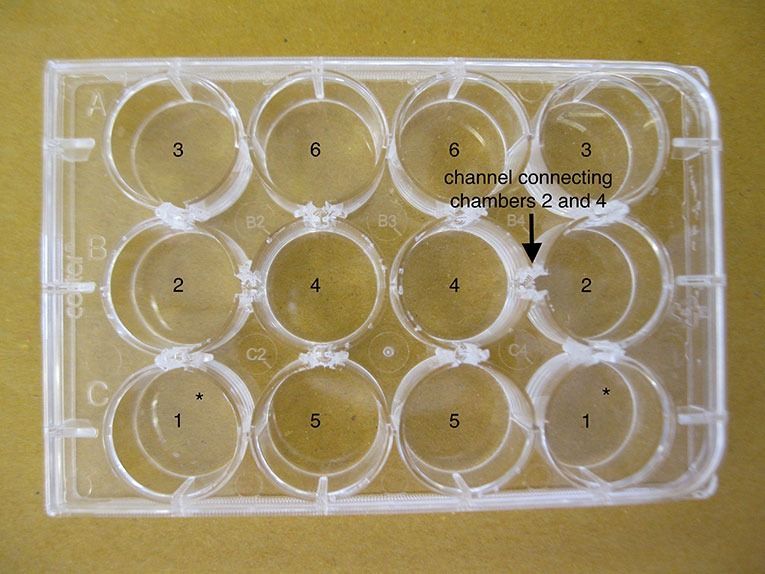
Figure 1. The ZEMCET consists of two, six-well testing arenas. Some wells in each arena are connected by a channel allowing zebrafish larvae to travel between individual wells and thus, the possibility to explore all six-wells. The asterisks indicate the starting chamber.
EthoVision XT enabled us to make conventional measures of movement in a single well and more importantly, allowed for the measurement of larval movement between chambers, resulting in a more comprehensive analysis of swimming behavior and exploratory behavior.
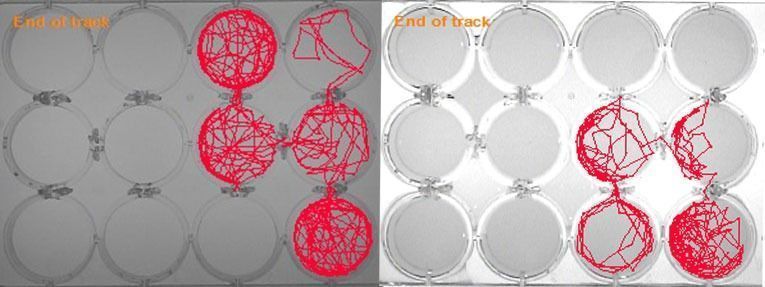
Figure 2. Trackings from single zebrafish larvae in the ZEMCET. The ZEMCETs on the right side of the panels show the path of larval movement between chambers. The ZEMCETs on the left do not contain a larva.
ZEMCET and video tracking: a powerful combination
While conventional behavioral methods still provide valuable behavioral information, the ZEMCET can be employed to gain more depth into the complex behavioral repertoire of larval zebrafish. In a recent study we used the ZEMCET to measure exploratory behavior in 5-day old larvae and found that larvae are capable of actively moving into all six chambers (Figure 3).
When coupled with EthoVision XT, the ZEMCET becomes a powerful tool with numerous possibilities for measuring a variety of behaviors. For example, the ZEMCET also allows for a more detailed measure of thigmotaxic behavior by allowing for the detailed analysis of the path larvae take when transitioning from chamber to chamber.
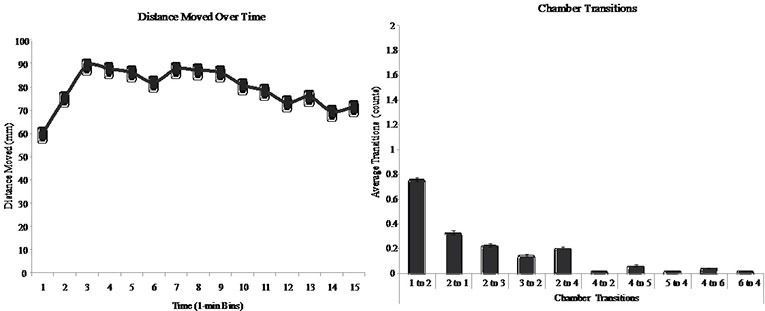
Figure 3. The left panel depicts total distance moved in the ZEMCET over a 15 minute observation period. The right panel shows the pattern of transitions between different chambers within the ZEMCET.
With the ZEMCET, a deeper understanding of the behavioral repertoire of larval zebrafish can be elucidated and much progress can be made in identifying the effects of environmental, pharmacological, genetic and other manipulations on behavior that until now, have not been measureable with conventional testing approaches.
By Brandon Chen and Frank M. Scalzo, PhD
Psychology Program, Bard College, 50 Sands Road, Annandale-on-Hudson, New York 12504; [email protected]
FREE TRIAL: Try EthoVision XT yourself!
Request a free trial and find out what EthoVision XT can do for your zebrafish research!
- Track zebrafish adult, larvae or embryo
- Suitable for tracking in any arena
- Most cited video tracking system
Related Posts
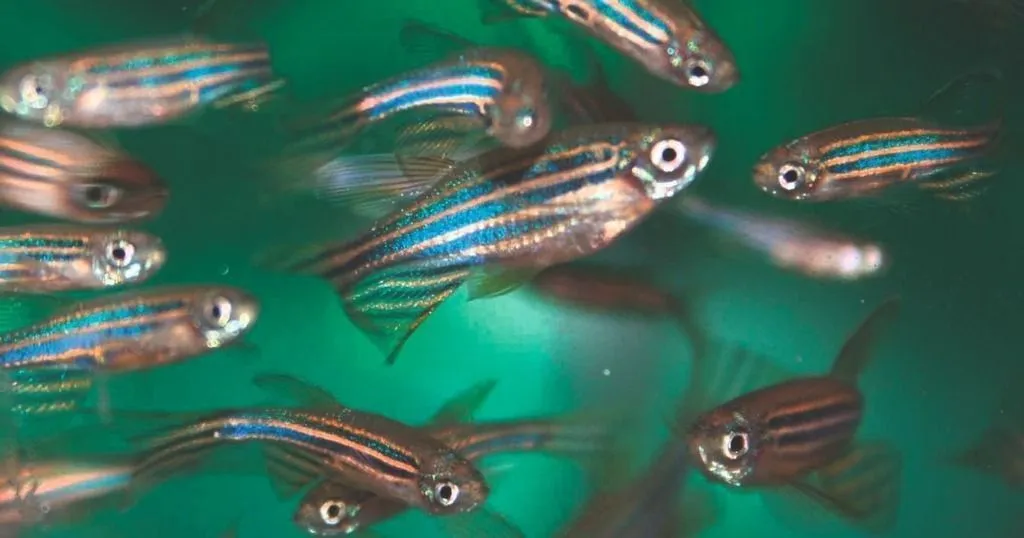
How zebrafish regenerate (and how to measure their recovery)
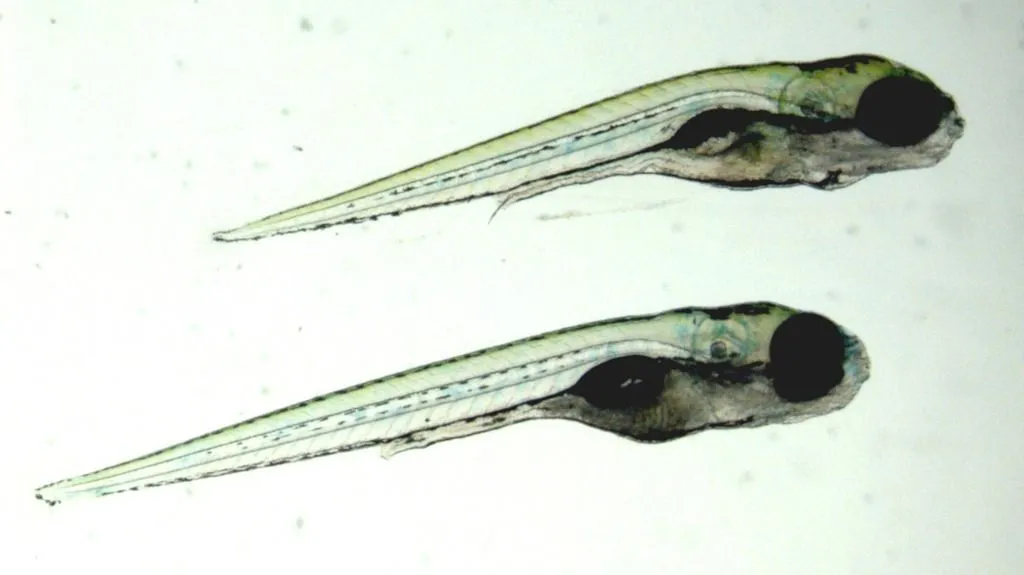
Tiny plastics, big problems: do nanoplastics affect neurodevelopment?
